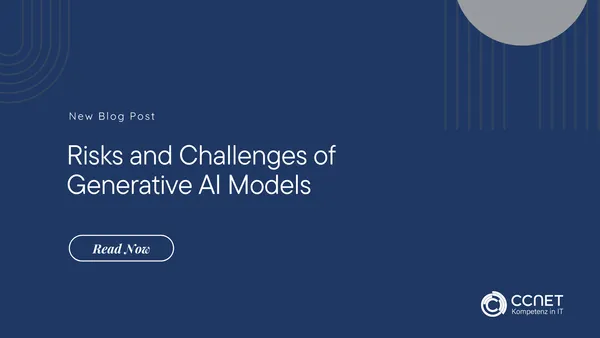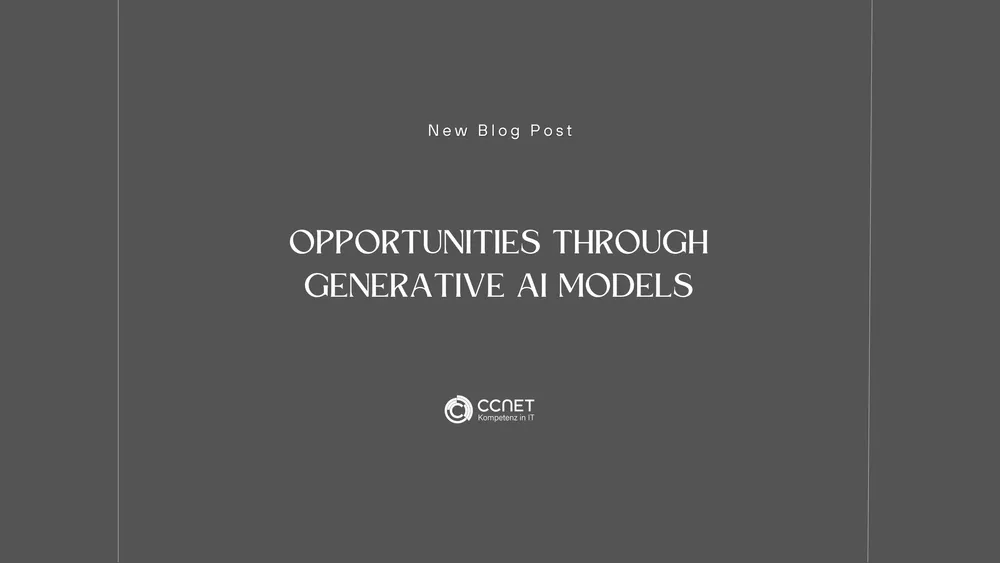
CCNet
May 27, 2024 • 2 min read

Risks and Challenges of Generative AI Models
While Generative AI models offer many opportunities, they also come with various risks and challenges associated with their use. These risks can have significant implications for IT security and data privacy and require careful attention. In this blog post, we will examine some of the key risks and challenges that businesses and organizations must address. Additionally, it is crucial to develop appropriate strategies and measures to minimize these risks. This includes implementing robust security protocols and raising awareness among employees about potential dangers posed by generative AI. Continuous monitoring of systems is also essential to timely respond to threats and prevent unauthorized access.
IT Security Risks in Handling Generative AI
The use of generative AI models entails specific IT security risks that can arise from proper usage or due to attacks. Alongside the obvious benefits, the use of such models also presents challenges that need to be acknowledged.
-
Lack of Quality and Facticity: Generative AI models can generate content that is inaccurate or even fabricated. This so-called "hallucination" can lead to misinformation and erroneous decisions. When such models are used for content creation, it is essential for users to critically assess the generated content and verify its accuracy. This often requires additional validation processes and quality controls to ensure that the generated content is correct and reliable.
-
Bias and Undesired Outputs: The quality and composition of training data can lead to biases in the model, which are reflected in the generated content. Undesired outputs such as personal or discriminatory content may also occur and require careful review and precautions by developers to minimize them. This may involve implementing mechanisms for bias mitigation and regularly reviewing training data to ensure that the model is balanced and fair.
-
Attacks on Generative Models: Attacks on generative AI models are diverse and can have severe consequences. Evasion attacks aim to modify the input to a model to bypass existing protection mechanisms or generate undesired outputs. Privacy attacks focus on reconstructing training data or parts thereof, raising significant privacy concerns. RCE (Remote Code Execution) attacks utilize generative AI models to generate malicious code, which can have potentially catastrophic consequences. Protecting against such attacks requires advanced security measures, including robust authentication, encryption, and continuous monitoring for suspicious activities.
Risks in Proper Usage and Misuse
In addition to attacks, there are risks arising from proper usage or misuse:
-
Reconstruction of Training Data: Attackers can gain information about a model's training data through targeted queries.
-
Embedding Inversion: These attacks aim to reconstruct input texts by reversing vector embeddings.
-
Generation and Enhancement of Malware: Generative AI models can be used to create malware, increasing security risks.
Conclusion
The risks and challenges posed by generative AI models are diverse and require targeted measures to address them. Organizations and businesses need to conduct comprehensive risk assessments and develop appropriate security strategies to mitigate these dangers. In the next blog posts, we will explore countermeasures and security strategies to effectively address these risks.


